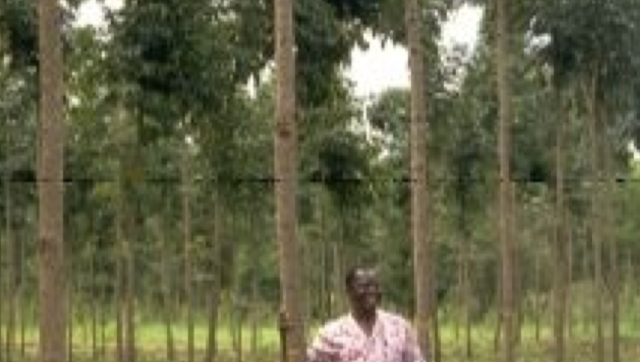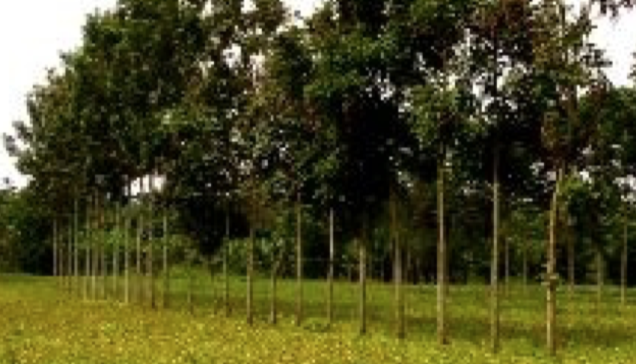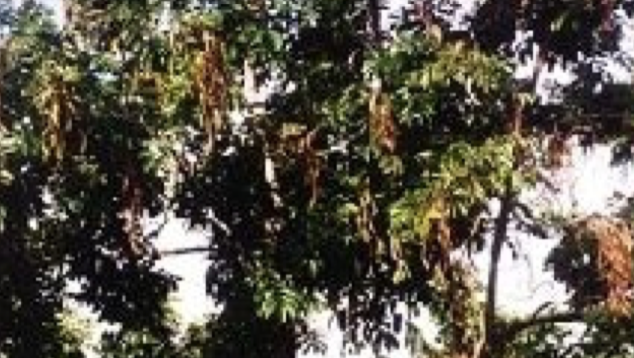Credit: Biovision-Infonet, World AgroForestry



Local names:Amharic (botoro); English (markhamia); Luganda (nsambya,lusambya); Somali (sogdu); Swahili (mtalawanda,mgambo); Trade name (markhamia)
Ecology: A tropical African tree common in the lake basin and highland areas, to 2,000 m. It stands acid heavy clay soil, but not waterlogging; prefers red loam and has deep roots. Ecozones II-III
Botanic Description
Markhamia lutea is an upright evergreen tree 10-15 m high, with a narrow, irregular crown and long taproot. Bark light brown with fine vertical fissures.
Leaves compound, often in bunches, thin and wavy, each leaflet up to 10 cm, wider at the tip, often with round outgrowths at the base.
Flower buds yellow-green and furry, splitting down 1 side as flower emerges. Flowers bright yellow, in showy terminal clusters, each trumpet shaped, to 6 cm long, with 5 frilly lobes, the throat striped with orange-red.
Fruit very long, thin, brown capsules, to 75 cm in length, hanging in clusters and tending to spiral, splitting on the tree to release abundant seed with transparent wings, 2.5 cm long and yellow-whitish when mature.
The genus was named after Sir Clement Markham, who introduced the famous quinine-yielding cinchona into India. The specific name, ‘lutea’, is Latin for golden-yellow.
Biology: M. lutea trees flower for much of the year. In western Kenya, flowering occurs from August to September, followed by seeding in February to March, while east of Mt Kenya, the flowering period is December to January and the seeding period July to August. Fruits develop within 6 months of insect pollination.
Biophysical Limits: Altitude: 900-2000 m, Mean annual temperature: 12-27 deg. C, Mean annual rainfall: 800-2000 mm
Soil type: Trees prefer red loam soil but can tolerate well-drained, heavy, acidic clay soils.
Documented species distribution: Native: Ethiopia, Kenya, Tanzania, Uganda Exotic:
Management System: Plantation/ amenity/ agroforestry systems
Tree Management: Propagated by use of seedlings and wildings. Are fast growing and coppicing may be employed in their management. They take between 15 – 30 yrs to mature
M. lutea grows fast in good forest soil, and plants can attain growth rates of more than 2 m/year. They should be planted in a deep hole, as the roots are long. Trees can be pruned and pollarded to reduce shading and are coppiced when they are about 1.7 m in height. Pods should be collected from the trees after they turn grey.
Germplasm Management: Seed storage behaviour is orthodox, but seeds are better sown fresh. After extraction, seeds can be dried in the sun to 5-10% mc. Mature and properly dried seeds can be stored in hermetic storage at 3 deg. C for several years with no loss in viability. On average, there are about 75 000 seeds/kg.
Pests and Diseases
Young trees are often attacked by shootborers, resulting in crooked stems.
End Use: Apiculture: M. lutea provides good bee forage. Fuel: Trees are a source of firewood and produce good charcoal. Fuel wood is used to cure tobacco in western Kenya. Timber: The wood, which is fairly resistant to termites, is used for furniture, poles, posts, tool handles and boat building. Medicine: Leaves are known to have medicinal value.
Services: Erosion control: Recommended for use in soil-conservation.
Shade or shelter: The species provides useful shade and acts as a windbreak.
Soil improver: It provides mulch, which enhances soil-moisture retention and increases organic matter. Ornamental: Attractive and worth planting as a screen or background tree for gardens and on golf courses. Boundary/barrier/support: M. lutea poles can be used as props to support banana trees.
Remarks: The species is widely used in western Kenya. The wood is fairly termite resistant.
Sources
Orwa C, A Mutua, Kindt R , Jamnadass R, S Anthony. 2009 Agroforestree Database:a tree reference and selection guide version 4.0 (http://www.worldagroforestry.org/sites/treedbs/treedatabases.asp)